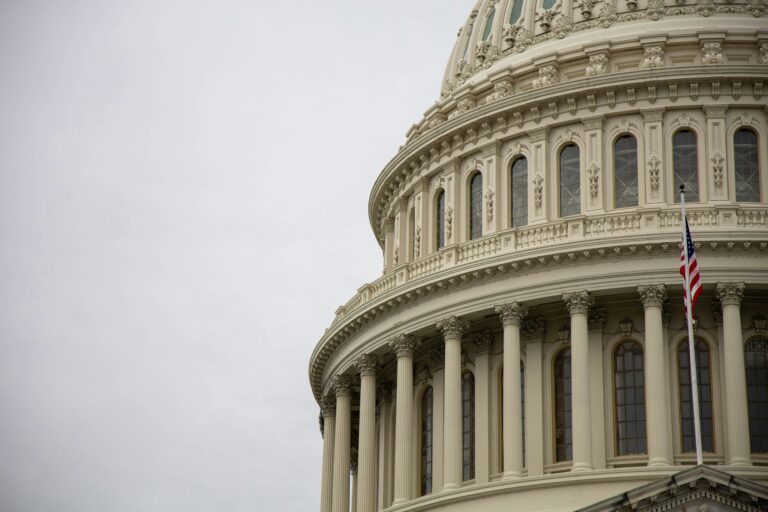
Introduction
Climate change is one of the most pressing challenges of our time, requiring urgent action to mitigate its effects and protect the environment. However, enacting effective climate change legislation often involves balancing environmental protection with economic growth. Policymakers face the difficult task of crafting policies that address the need to reduce greenhouse gas emissions while minimizing economic disruptions. In this article, we will explore the challenges of enacting climate change legislation, examine successful case studies, and discuss how governments can balance environmental and economic interests to create sustainable solutions.
The Challenge of Balancing Environmental and Economic Goals
Climate change legislation aims to reduce carbon emissions, promote renewable energy, and ensure sustainable development. However, implementing these policies can have economic consequences, such as increased costs for businesses, potential job losses in certain industries, and the need for significant infrastructure investment. The challenge for policymakers is to design legislation that effectively reduces emissions without causing undue harm to the economy.
Opponents of climate change legislation often argue that stricter regulations and carbon pricing mechanisms can harm economic growth, particularly in sectors like manufacturing, agriculture, and energy production. For industries that rely heavily on fossil fuels, the transition to cleaner energy sources can be costly and disruptive. Additionally, concerns about competitiveness arise, as businesses in countries with stringent climate regulations may face higher production costs compared to those in countries with more lenient policies.
On the other hand, supporters of climate change legislation emphasize the long-term benefits of transitioning to a green economy. Investing in renewable energy, energy efficiency, and sustainable infrastructure can create new jobs, reduce health costs associated with pollution, and make economies more resilient. Policymakers must navigate these competing interests to create legislation that achieves environmental goals while supporting economic stability and growth.
Carbon Pricing as a Tool for Climate Action
One of the most widely discussed tools for addressing climate change is carbon pricing, which puts a cost on carbon emissions to encourage businesses and consumers to reduce their carbon footprint. Carbon pricing can take the form of a carbon tax or a cap-and-trade system.
- Carbon Tax: A carbon tax sets a fixed price on carbon emissions, providing businesses with a clear incentive to reduce emissions. The revenue generated from the tax can be used to invest in renewable energy, support vulnerable communities, or reduce other taxes. However, carbon taxes can be politically contentious, as they may lead to higher costs for consumers and businesses.
- Cap-and-Trade System: A cap-and-trade system sets a limit on the total amount of greenhouse gases that can be emitted, and companies are issued permits that allow them to emit a certain amount. Companies that reduce their emissions can sell their excess permits to others, creating a market-based incentive for emission reductions. While cap-and-trade systems offer flexibility, they can be complex to implement and require careful regulation to prevent market manipulation.
Carbon pricing has been successfully implemented in several countries and regions. For example, the European Union’s Emissions Trading System (EU ETS) has been effective in reducing emissions from power generation and industrial sectors. However, the success of carbon pricing depends on setting the right price and ensuring that the system is fair and equitable for all stakeholders.
Case Study: Germany’s Energy Transition (Energiewende)
Germany’s “Energiewende” (energy transition) is a notable example of a country attempting to balance environmental and economic goals through ambitious climate change legislation. The Energiewende aims to phase out nuclear power, reduce greenhouse gas emissions, and transition to renewable energy sources like wind and solar.
The policy has led to significant growth in renewable energy, with renewables accounting for a substantial share of Germany’s electricity generation. This shift has created new jobs in the renewable energy sector and reduced the country’s carbon emissions. However, the transition has not been without challenges. Germany has faced rising electricity costs, and the phase-out of nuclear power has led to an increased reliance on coal in the short term, complicating efforts to meet emission reduction targets.
Despite these challenges, Germany’s experience demonstrates that it is possible to pursue ambitious climate goals while maintaining economic growth. The Energiewende has also highlighted the importance of investing in grid infrastructure, energy storage, and support for communities affected by the transition away from fossil fuels.
Case Study: California’s Climate Leadership
California has been a leader in climate change legislation in the United States, enacting policies aimed at reducing greenhouse gas emissions and promoting clean energy. The state’s cap-and-trade program, renewable portfolio standards, and vehicle emissions regulations have made California a model for other states and countries seeking to address climate change.
California’s climate policies have successfully reduced emissions while supporting economic growth. The state has seen significant investment in renewable energy projects, and the clean energy sector has become a major source of employment. However, California’s approach has also faced criticism, particularly regarding the impact of rising energy costs on low-income communities. To address these concerns, the state has implemented measures to provide financial assistance to vulnerable households and ensure that the benefits of climate action are shared equitably.
California’s experience highlights the importance of integrating social equity into climate change legislation. By addressing the needs of disadvantaged communities and ensuring that the transition to a green economy is fair, policymakers can build broader support for climate action.
The Role of Innovation and Technology
Innovation and technology play a critical role in balancing environmental and economic interests in climate change legislation. Technological advancements can help reduce the costs of transitioning to a low-carbon economy and create new opportunities for economic growth. For example, advancements in renewable energy technologies have significantly reduced the cost of solar and wind power, making them competitive with fossil fuels in many regions.
Investment in research and development (R&D) is essential for driving innovation in clean energy, energy storage, and carbon capture technologies. Governments can support innovation by providing funding for R&D, offering tax incentives for clean energy projects, and creating favorable regulatory environments for emerging technologies. By fostering innovation, policymakers can make the transition to a green economy more affordable and ensure that businesses remain competitive in a changing global landscape.
International Cooperation and Climate Agreements
Climate change is a global problem that requires international cooperation. Agreements like the Paris Agreement play a crucial role in setting global emission reduction targets and encouraging countries to adopt ambitious climate policies. However, balancing environmental and economic interests is particularly challenging for developing countries, which may lack the resources needed to transition to cleaner energy sources.
Developed countries have a responsibility to support developing nations in their efforts to address climate change. This support can take the form of financial aid, technology transfer, and capacity building. By helping developing countries transition to low-carbon economies, the international community can ensure that climate action is both effective and equitable.
Conclusion
Enacting climate change legislation that balances environmental and economic interests is a complex and challenging task. Policymakers must navigate competing priorities, address the concerns of affected industries and communities, and ensure that the transition to a green economy is fair and equitable. Case studies from Germany, California, and other regions demonstrate that it is possible to achieve significant emission reductions while supporting economic growth, but these efforts require careful planning, investment in innovation, and a commitment to social equity.
By adopting a balanced approach that integrates environmental protection, economic development, and social equity, governments can create sustainable climate policies that benefit both people and the planet. The challenges are significant, but with innovation, international cooperation, and a shared commitment to action, it is possible to address climate change while building a prosperous and resilient future for all.




